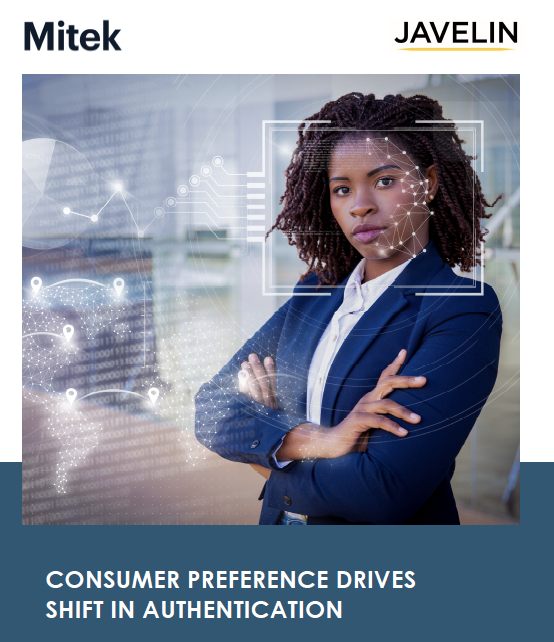
Consumer preference drives shift in authentication
 In 2020 consumers were forced to change the way we live and were required to shift to digital channels for their payments and banking needs. This also meant a change in how financial institutions were expected to authenticate consumers’ identities. According to Javelin’s 2021 Identity Fraud Study: Shifting Angles, combined identity fraud losses reached $56 billion in 2020, with many of those losses attributable to poor authentication during new account opening.
In 2020 consumers were forced to change the way we live and were required to shift to digital channels for their payments and banking needs. This also meant a change in how financial institutions were expected to authenticate consumers’ identities. According to Javelin’s 2021 Identity Fraud Study: Shifting Angles, combined identity fraud losses reached $56 billion in 2020, with many of those losses attributable to poor authentication during new account opening.
This study, authored by Javelin and sponsored by Mitek, explores shifting consumer preference in authentication methods and what financial services can do to both instill consumer confidence and maintain continuous authentication across the account and transaction life cycle.
Topics discussed include:
- Biometric authentication
-
Phasing out one-time passcodes
-
Continuous user authentication across the customer lifecycle
-
Adoption of layered, multi-factor authentication
-
Reinforcing consumer trust
Stepping away from traditional passwords
This report, sponsored by Mitek Systems, explores shifting consumer preference in authentication methods and what financial services can do to both instill consumer confidence and maintain continuous authentication across the account and transaction life cycle. The report is derived from the 2021 Identity Fraud Study: Shifting Angles, published by Javelin Strategy & Research in March 2021.
Methodology: In October 2020, Javelin conducted a nationally representative online survey of 5,000 U.S. consumers to assess the impact of falling victim to fraud, uncover where fraudsters are making progress, explore consumers’ actions and behaviors, and identify segments of consumers most affected by fraud.